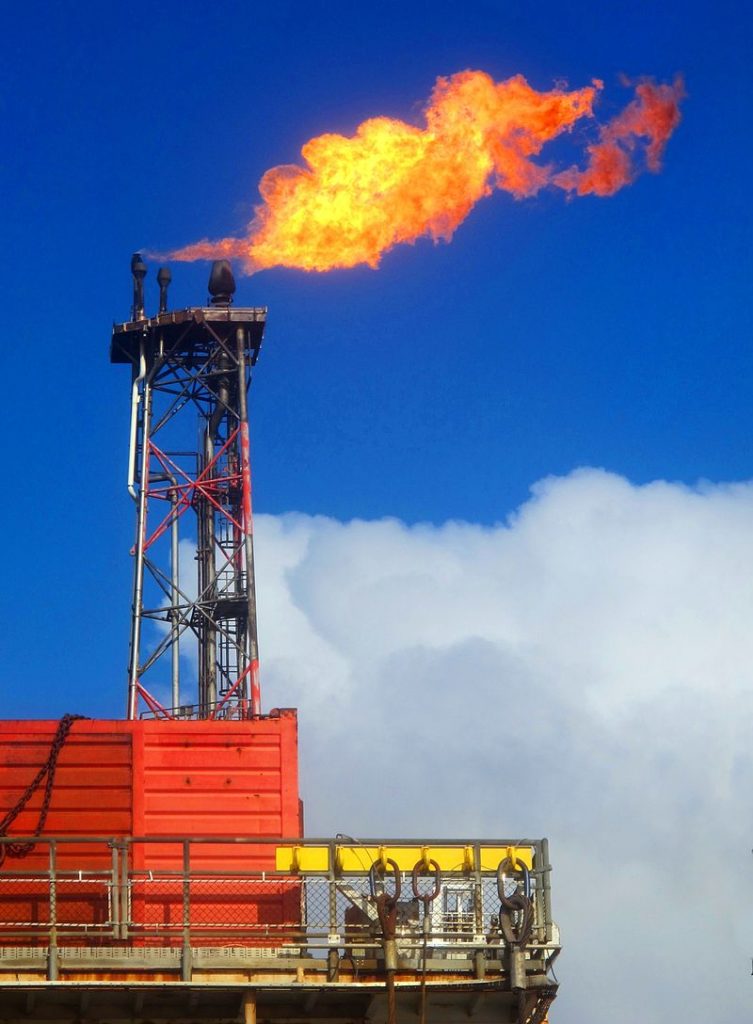Natural gas flaring at onshore oil and gas operations in the United States dropped to its lowest point since 2012 in the third quarter of 2021, according to the consulting firm Rystad Energy.
Flaring especially declined in the Permian Basin in Texas and the Bakken Formation in North Dakota, where increasing numbers of companies are minimizing the burning off of excess natural gas.
Oil and gas companies’ have taken various actions to capture excess natural gas, in order to sell it. This has both increased revenues and resulted in a dramatic decline in flaring at U.S. onshore wells.
Rystad reports the combined, total flared volume from the five largest oil and gas producing basins is down from 1.8 billion cubic feet per day (cf/d) in August 2019 to just 400 million cf/d in March 2021.
New Federal Methane Rules
The decline in flaring comes as federal agencies are proposing stricter limits and inspection regimes governing methane releases from oil and gas operations.
The U.S. Environmental Protection Agency (EPA) has proposed lowering the amount of volatile organic compounds and greenhouse gases that can be emitted from existing wells and operations that emit an estimated 3 tons of methane per year or more. The EPA says this rule, which will take effect in 2023, will reduce methane emissions from oil and gas operations by 74 percent from 2005 levels by 2035.
The agency says this should capture sites responsible for 86 percent of flared methane.
Also, the Pipeline and Hazardous Materials Safety Administration has proposed requiring companies to monitor and repair leaks on about 400,000 miles of previously unregulated natural gas gathering lines.
Companies Reducing Flaring
As Rystad’s report indicates, companies are not waiting for federal regulations to reduce flaring.
Apache Corporation has ended routine flaring at all of its U.S. onshore operations, achieving one of the company’s 2021 environmental, social, and governance (ESG) goals 3 months ahead of schedule.
As a result overall flaring intensity is below 1 percent of gas produced. In addition, the company has pledged future onshore oil wells will not be brought online without adequate capacity to store or take gas away.
Apache’s success was made possible because its majority-owned midstream company, Altus, invested more than $850 million in two new natural gas pipelines, enabling the company to transport previously flared natural gas. In addition, Apache added compression and optimizing facilities allowing more gas to be brought to the market.
Diamondback Energy announced in its December sustainability report plans to eliminate routine flaring at its facilities by 2025.
The company already reduced flared volumes 58 percent between 2019 and 2020. Additionally, the company has set a goal of reducing methane intensity a minimum of 70 percent of 2019 levels by 2024.
In the spring of 2021, British Petroleum (BP), which also has extensive operations in the Permian Basin, announced it was investing $1.3 billion to end routine flaring from its U.S. onshore operations by 2025. BP has already reduced the flared volume from its Permian Basin operations to just 2 percent of gas produced, down from as much as 16 percent at times in the fourth quarter 2019.
Pipelines Make Reductions Possible
Texas has led the way in flaring reductions, says Jason Modglin, president of the Texas Alliance of Energy Producers.
“We are getting to low amounts of available recapturable gas – just 0.25 percent of gas is going to flare in Texas today,” Modglin said. “This means 99.75 percent is being sold in the marketplace.
“Texas leads the world in flaring reductions, and some companies are striving to get to absolute zero,” said Modglin. “The Texas Railroad Commission has set the right model for reducing flaring while increasing natural gas production, whereas Colorado’s draconian rules have resulted in less production.”
The war on pipelines is arguably the greatest obstacle to further reductions in methane flaring, says Dan Kish, Senior vice president at the Institute for Energy Research.
“As pipeline capacity is added, companies will reduce flaring and increase deliveries of gas,” said Kish. “The completion of pipelines to take away gas is making the reduction of flaring possible.
“Anti-energy Greens have tried to stop pipelines everywhere, making flaring more likely,” Kish said. “If environmentalists and the Biden Administration truly want to reduce flaring, they would work to speed pipeline construction rather than stopping it.”
Duggan Flanakin (dflanakin@gmail.com) writes from San Marcos, Texas.
